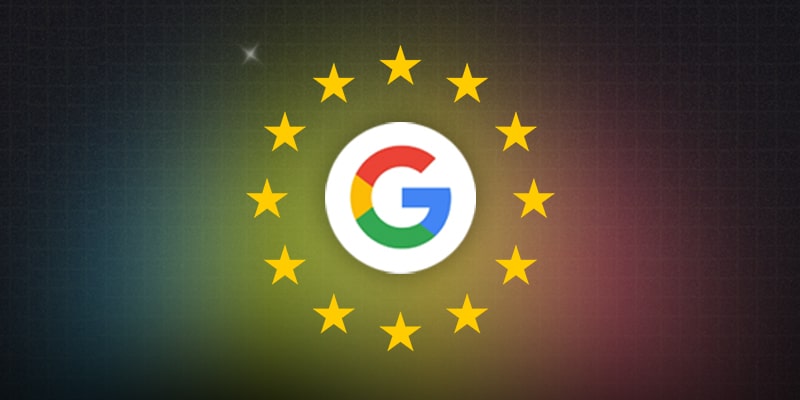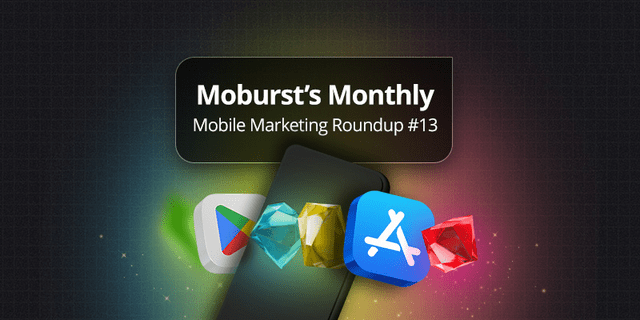What is Mobile Marketing? Definition & Tips

This post was originally published in July 2021 and updated in September 2023.
In the digital age, where smartphones have become a staple in our daily lives, brands can’t afford to ignore the power of mobile marketing. According to Statista, as of 2023, there are over 6.5 billion smartphone users worldwide, representing a massive pool of potential customers that businesses can tap into.
Mobile device usage for online transactions is also consistently on the rise. As of 2024, smartphones accounted for approximately 74% of retail site traffic worldwide and generated 63% of online shopping orders.
This shift in consumer behavior has given rise to a new marketing landscape where mobile is king. But what exactly is mobile marketing, and why is it so crucial for brands today?
In this article, we’ll delve deeper into the definition of mobile marketing and its benefits, and provide you with some of our top tips to maximize your next campaign. Let’s get started!
What is Mobile Marketing?
Mobile marketing is a strategy aimed at reaching a target audience on their mobile devices, including smartphones and tablets. This form of marketing leverages the unique features of mobile devices, such as location services and personalization capabilities, to create a personalized, interactive experience for users.
It encompasses a wide range of tactics, including SMS, mobile app marketing, mobile search ads, QR codes, and location-based services, among others. The goal is to build an integrated, multi-channel strategy that reaches consumers at various touchpoints throughout their mobile journey to maximize the effectiveness of your message.

Broadly speaking, mobile marketing can be divided into the following categories:
- Direct mobile marketing
- Indirect mobile marketing
Direct Mobile Marketing
Direct mobile marketing involves tactics that directly target consumers on their mobile devices. These strategies usually involve sending promotional messages or alerts to users who have opted in to receive such communications. Examples of direct mobile marketing include SMS or MMS marketing, push notifications, and app-based marketing.
Indirect Mobile Marketing
This type of mobile marketing uses mobile devices as a channel within a broader marketing strategy. For example, it can be an ad on your mobile browser letting you know about current specials at your corner grocery store or a publicity campaign for a new fragrance. Here, a hybrid mobile marketing strategy is pursued, a part of which takes place offline.
Indirect mobile marketing also involves tactics that do not target users directly on their mobile devices but instead aim to enhance the overall mobile experience. This could include optimizing a website for mobile viewing, creating engaging mobile content, or leveraging social media platforms popular with mobile users.
Why is Mobile Marketing Important?
As we delve deeper into the world of mobile marketing, it is crucial to understand its importance in a broader context. The significance of mobile marketing lies not just in its reach, but also in its ability to create personalized experiences, enable real-time interactions, provide valuable insights, and offer a competitive edge. Let’s explore these key areas in more detail.
- Reach: With over 93% of internet users accessing the internet via a mobile device, mobile marketing provides access to a vast audience.
- Real-Time Interaction: Mobile marketing enables immediate communication with customers, enhancing relationships and customer satisfaction.
- Valuable Insights: Mobile analytics provide valuable customer insights, informing data-driven marketing strategies.
- Competitive Advantage: Leveraging mobile marketing can give businesses a competitive edge in the growing mobile commerce landscape.
Benefits of Mobile Marketing
In addition to the above, there are several other advantages of mobile marketing, including:
- Targeting
- Cost
- Analytics
Looking for an Expert Mobile Marketing Agency?
Our ASO and mobile marketing specialists are here to help you achieve success.
Targeting
Mobile marketing offers the unique advantage of precise targeting, allowing businesses to send personalized and relevant messages to users exactly when and where they’re most effective. With the wealth of data available, it’s a win-win situation for both marketers and consumers. Marketers can zero in on their specific audience, while consumers receive marketing messages tailored to their interests and needs.
Contrast this with traditional offline marketing methods, such as billboard campaigns. Here, marketers have limited control over their target audience—aside from selecting a general location for their billboard. Consequently, many consumers encounter messages that hold little relevance to them.
Cost
Being able to target the right consumers automatically brings down the cost of getting the message across to the right people. With mobile marketing, you can choose exactly who you want to receive your marketing message and even the price you’re willing to pay to deliver the message to your audience.
Analytics
With so much data available when it comes to mobile marketing, marketers can optimize their campaigns in real time, garner important information for product improvements, and further improve targeting and cost efficiencies.
How to Create an Effective Mobile Marketing Strategy
Now that we have looked at what mobile marketing is and the importance it has in the industry, we’ll take a look at the strategy behind it. For marketers, this is the most important aspect of mobile marketing.
As a premier mobile marketing agency, named as one of the “Top 3 Mobile Agencies Worldwide” by Clutch, at Moburst, we have significant experience in setting up a mobile marketing strategy.

An effective mobile marketing strategy can drive customer engagement, increase revenue, and boost return on investment (ROI). Let’s delve into key components that make a mobile marketing strategy successful:
Business Goals
The first step in defining your mobile marketing strategy is deciding on your business goals. This can be the goal for a specific mobile marketing campaign or more general. Goals should be SMART, meaning specific, measurable, achievable, relevant, and time-bound. This means a goal such as “Increase awareness” is not going to cut it for long-term success. Instead, a great goal can be: “Reach one million relevant users with a CPM of $3”.
Segmentation
Understanding your audience is the second step towards crafting an impactful mobile marketing strategy. Segment your audience based on demographics, location, interests, mobile behavior, and more. This allows you to tailor your marketing efforts to resonate with specific groups within your target audience.
Targeting
Once you’ve segmented your audience, it’s time to target them with personalized, relevant messages. Mobile marketing offers precise targeting capabilities that allow for highly customized interactions. The right message delivered at the right time can significantly enhance customer engagement and conversion rates.
App Store Optimization (ASO)
Just like SEO for websites, App Store Optimization (ASO) is vital for the visibility of your mobile app in an app store. It involves optimizing your app’s title, description, keywords, screenshots, and more to improve its ranking in app store search results. A higher ranking increases the likelihood of your app being discovered by potential users.
Positioning
How does your product or service stand out in the mobile market? What unique value does it offer to users? Answering these questions will help you position your offering effectively. Clear positioning communicates your value proposition to your target audience and differentiates you from competitors.
Crafting Effective Messages
Your mobile marketing messages should be clear, concise, and compelling. They should evoke emotion, create a sense of urgency, or provide valuable information. Ensure your messages align with your brand voice and appeal to your target audience’s interests and needs. We also recommend focusing on one key message for your target audience. This message should be hyper-relevant for them while emphasizing your USP (unique selling proposition) in order to stand out.
Building Customer Relationships
Finally, mobile marketing isn’t just about selling—it’s also about building lasting relationships with your customers. Engage with them regularly through various mobile channels, listen to their feedback, and provide exceptional customer service. This fosters trust and loyalty, turning customers into brand advocates.
Looking to Increase Your ROI?
Our ASO and mobile marketing specialists are here to help you achieve success.
Types of Mobile Marketing
Mobile marketing offers a diverse range of types to reach customers more effectively and execute the perfect mobile marketing campaign. Here are some popular types:
1. App-based Marketing: This involves advertising through mobile apps. These could be mobile ads developed and displayed within third-party apps or the brand’s own app.
2. In-Game Mobile Marketing: These are ads that appear within mobile games. They can be banner pop-ups, full-page image ads, or even video ads that play in between gaming sessions.
3. SMS Marketing: One of the oldest forms of mobile marketing, it involves sending promotional messages directly to consumers’ phones via text.
4. Mobile Search Ads: These are basic Google search ads built for mobile, often featuring extra add-on extensions like click-to-call or maps.
5. Mobile Image Ads: An image ad that appears on websites when viewed on a mobile device.
6. Location-Based Marketing: These ads appear on mobile devices based on a user’s location relative to a specific area or business.
7. QR Codes: Codes that users can scan using their phone camera, which takes them to a specific webpage.
8. Push Notifications: Messages that pop up on a mobile device. App publishers can send them at any time; users don’t have to be in the app or using their devices to receive them.
9. Email Marketing: Email marketing is probably more popular with brands than SMS marketing these days, and that’s down to its less intrusive nature and the room for creativity that is not possible within an SMS. There are many tools out there to help you with your audience segmentation, template design, email A/B testing, data, and tracking, for example, MailChimp.
You can use your email marketing campaigns to promote app downloads as well as encourage user retention by reminding users of the benefits of your app, new updates, cool features, and just generally providing them with value. You can craft an entire user journey with different emails going out to different segments of your audience based on their actions, e.g. if they downloaded your app or if they didn’t, or if they made an in-app purchase.
Each mobile marketing type has its own benefits and is suited to different kinds of campaigns, so it’s important to understand your audience and objectives when choosing which to use.
Mobile Marketing Trends
Mobile marketing is constantly changing and evolving. From social commerce and influencer marketing to augmented reality and voice search optimization, let’s go over the key mobile marketing trends shaping the industry in 2023:
Social Commerce
Major apps like Facebook, TikTok, Instagram, and Snapchat have recently started supporting social commerce, making it a significant trend to look out for in 2023. Social commerce involves buying and selling products directly within social media platforms, providing a seamless shopping experience for users. Some examples include Instagram Shopping, Facebook Shops, and more.
Micro-Influencers & UGC
Micro-influencers generally have smaller audiences and play a prominent role in customer engagement. They can create more personalized and authentic content, leading to higher engagement rates and trust among their followers. Since they’ve gained a lot of popularity in recent years, this makes them great to use for mobile marketing campaigns. Speaking of great, utilizing user-generated content, which means getting users involved, is also a sure way to get your mobile marketing campaign to go viral.

Video-Focused Mobile Campaigns
The emergence of TikTok has solidified video as the king of engaging content. This, of course, also applies to creating mobile-focused marketing campaigns.
Mobile Augmented Reality (MAR) Advertising
VR and AR have been utilized quite a lot in advertising in recent years, with the mobile AR market expected to reach $36 billion by 2026. MAR works on compatible smartphones and tablets to provide an interactive and immersive experience for users. With the expected increase of mobile AR user devices, this trend is one to keep an eye out for in upcoming years.
Voice Search Optimization
“Alexa, how much are the new Jordans?”
With the rise of voice assistants like Siri and Alexa, optimizing for voice search has become a crucial mobile advertising trend. Ensuring your content can be easily found through voice search could be the key to getting a leg up on the competition.
Augmented Reality Shopping
AR shopping is another exciting mobile marketing trend that offers users a truly immersive and interactive shopping experience. Imagine being able to show your customers how furniture will look in their homes before they even make a purchase. The possibilities are truly limitless, and harnessing this innovative shopping experience is a great way to offer your audience a unique connection with your products.
Personalization
In today’s marketing landscape, personalization is no longer just a nice-to-have; it’s a must-have. Particularly when targeting mobile users, delivering customized content based on their preferences, behaviors, and personal data is paramount. We all know that a one-size-fits-all approach no longer resonates, so it’s crucial to adapt your messaging to engage and connect with your audience effectively.
Mobile Marketing Tips for Brands
Get Granular With Your Messaging
When you’re browsing your news feed or viewing Instagram stories, localized creative messaging stands out more, and we tend to sit up and take notice.
Localizing your creative messaging can lead to a much higher conversion rate. For example, we were working with an On-Demand app client of ours and decided to start gradually localizing by city. When the creative and message was specific to that city, the conversions skyrocketed.
So, if Chicago falls under your geo, throw up some images of Wrigley Field. If you operate in Seattle, maybe opt to show some nice shots of the Space Needle. It may require a little extra work to localize each creative asset, but it will be worth it.
Step Out Of Your Comfort Zone
So much of mobile marketing is data-driven. The information is available to you, but the real magic comes when you analyze it. This can result in tremendous learning, especially as data is generated from different campaign types and platforms.
So, our advice is to get out of your comfort zone and test new ideas. Test platforms that you may never have used in the past (Ad Networks, Pinterest, TikTok, Instagram Stories) and see what converts users. Test new creatives. Try out new banners, and see if they increase your CTRs.
All of these tests, even if done on a smaller scale at first, will result in invaluable data and are sure to help when it comes to your next successful campaign.
TikTok Mobile Marketing Campaign Example
Back in 2021, we tested a new concept with an e-commerce client of ours, Shopkick. Due to the pandemic, in-store shopping was at an all-time low, and CPIs were at an all-time high. This was bad news for Shopkick, who relied on both in-store shopping and app installs. Our solution to the problem was to help establish Shopkick as its category’s leading presence on TikTok. PS. If you want to learn all about TikTok and how to use it for your next campaign, read our full guide to TikTok marketing.
We launched the first TikTok user acquisition campaign expecting huge success in the same vein as the countless mobile ads on various channels we’d tested together for years. However, the average CPI was six times higher than we usually saw. The same types of ads we normally produce with great success were not performing well on TikTok specifically.
We took a deep dive into the data to identify what went wrong and what needed improvement. The initial creatives clearly weren’t resonating with the TikTok demographic, so we devised an entirely new set of videos in authentic TikTok content style. We didn’t want them to feel at all like traditional ads because the data shows TikTok users respond better to authenticity.
Then, the campaign made a mighty comeback: the CPI decreased by 87%, the CPR decreased by 89%, and the CPA reduced by 86%.
So, the campaign boosted the ROI and unlocked an entirely new generation of active app users with a much higher app retention rate (Gen Z TikTok users). This campaign also led to Moburst receiving the Most Effective Video Campaign award at the 2021 Effective Digital Marketing Awards by Mobile Marketing Magazine.
What this should teach you is that testing new ideas can skyrocket your campaigns and inform your future strategies to ensure success. Pay attention to the data and use it to improve.
Mobile Marketing Solutions
There are numerous mobile marketing solutions available. Generally, brands will not handle all their marketing needs in-house due to the complexity and constantly changing nature of the industry. Instead, hiring a full-service mobile marketing agency like Moburst means you’ll benefit from the expertise of multiple mobile marketing areas. In fact, even the biggest brands in the world partner with us to run their campaigns.
Typically, mobile marketing solutions are relatively fragmented. You can consult Facebook Experts, PPC Generalists, Creatives, ASO Analysts, and so on. There are also a few full-service companies like ours that offer complete mobile marketing solutions.
For example, as a full-service mobile marketing agency, we at Moburst work with clients to decide on an overall strategy, execute the strategy, optimize along the way, and drive results all the way until the business goals are met.
Mobile Advertising
A subset of marketing is mobile advertising, a “form of advertising via mobile phones or other mobile devices”.
Mobile advertising includes specifics like web display ads, mobile sites or social media ads and is a single strategy that falls under mobile marketing in general. Mobile marketing, on the other hand, includes many other strategies.
Mobile advertising statistics show the huge opportunity ahead. Global mobile ad spend is projected to hit more than $240 billion by 2022 according to Statista.
Are you in need of a Mobile Marketing Agency?
Our ASO and mobile marketing specialists are here to help you achieve success.
Mobile Marketing FAQs
Mobile marketing is a subset of marketing that involves everything to do with mobile devices, including phones, tablets, and other related devices. Essentially, mobile marketing is connecting with your audience through their mobile experience wherever they are, ideally in a manner and point in time that maximizes the effectiveness of your message.
A mobile app is mainly marketed through App Store Optimization and Paid mobile ads. Of course, they can also be promoted through other digital mediums like email or blog posts.
Location-based mobile marketing is a type of digital marketing that sends predefined ads and messages to a user depending on his exact geographical location.
Mobile marketing automation is a process in which the rules of showing ads, offers, or sending emails are automated based on pre-defined rules and special user criteria such as activity, location, and phone type.
Mobile marketing is important because mobile phones send relevant information to advertisers. Geo-location, app activity, and phone usage can be used to create personalized ads for the user, resulting in increased conversion rates.








